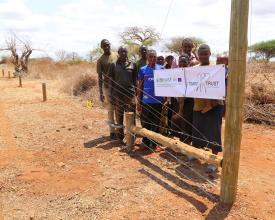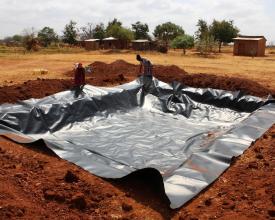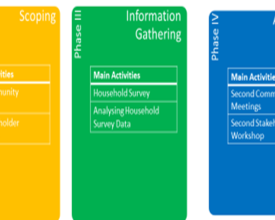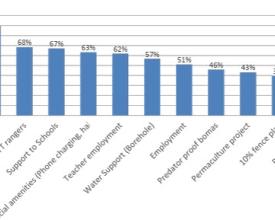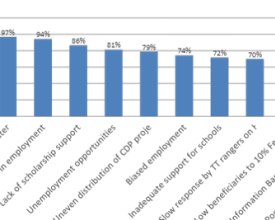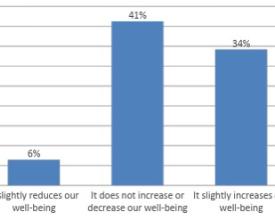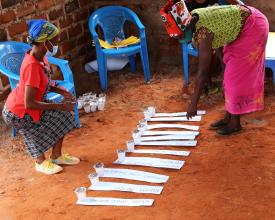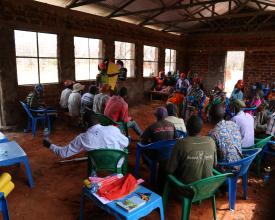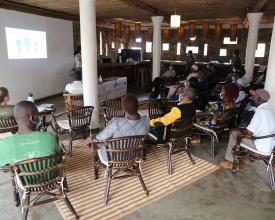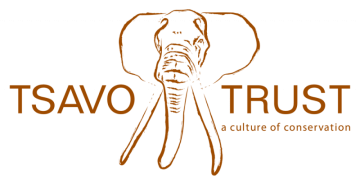
Renforcer la résilience des communautés face aux impacts du COVID-19 dans la zone de conservation de Kamungi, au sud du Kenya

Le Tsavo Trust (TT) travaille dans la zone de conservation de Tsavo (TCA) qui s'étend sur 42 000 km2. Elle comprend les parcs nationaux de Tsavo Est, Tsavo Ouest et Chyulu Hills. Les communautés locales entourant la zone de conservation du Tsavo ont des opportunités économiques limitées, des conditions agricoles défavorables et manquent de services gouvernementaux de base, ce qui oblige certains individus à se tourner vers des activités illégales pour survivre.
TT a appliqué l'outil SAPA à la zone de conservation de Kamungi, une méthodologie simple et peu coûteuse pour évaluer les impacts des zones protégées (ZP), des activités de conservation et de développement sur le bien-être des communautés vivant au sein de la ZP. TT a établi une base de référence des principaux impacts sociaux, a compris les causes sous-jacentes des défis communautaires et a identifié des idées qui contribuent positivement au bien-être des communautés.
TT a construit 4 clôtures de 10 % (atténuation des risques de blessures corporelles) au profit de 40 personnes. Le suivi et l'évaluation ont révélé une diminution de 100 % des pertes de récoltes dues à la faune, une amélioration des perceptions et des moyens de subsistance, réduisant ainsi la pression sur l'aire protégée.
Contexte
Défis à relever
TT a utilisé l'outil SAPA pour identifier et hiérarchiser les impacts positifs et négatifs du point de vue des bénéficiaires à Kamungi. Les défis identifiés par l'étude ont entravé le processus de développement et d'autonomisation de la communauté.
Les défis comprennent le conflit entre l'homme et la faune (HWC), le premier impact négatif à 99%, TT a développé des mesures d'atténuation du HWC, c'est-à-dire un plan de clôture de 10% et une clôture d'exclusion des éléphants.
L'accès à l'eau est le deuxième impact négatif (97 %), en raison de l'irrégularité des précipitations dans la région. Pour y remédier, TT a creusé un puits pour la communauté et mis en place 110 réservoirs d'eau.
Le népotisme, l'absence d'emploi et les préjugés en matière d'emploi ont été classés 3e, 5e et 7e avec 94 %, 81 % et 74 %. À ce jour, TT a embauché plus de 45 employés permanents issus des communautés.
Dans le domaine de l'éducation, le manque de bourses d'études et le soutien inadéquat aux écoles ont été classés 4ème et 8ème avec 86% et 72%. TT a réussi à collecter des fonds pour financer 9 bourses d'études et construire un laboratoire de sciences et d'informatique dans une école secondaire locale.
Emplacement
Traiter
Résumé du processus
Le processus SAPA se compose de 5 phases (préparation, délimitation du champ d'application, collecte d'informations, évaluation et action). Certaines phases ont été combinées dans les blocs de construction et la mise en œuvre effective afin d'atteindre l'objectif global de l'évaluation SAPA.
Le premier bloc a combiné les phases 1 et 2 du SAPA (évaluations communautaires), qui comprenaient la planification de l'évaluation, la cartographie de la communauté, l'examen des informations existantes, l'identification et l'analyse des parties prenantes, l'organisation de groupes de discussion communautaires pour recueillir les impacts positifs et négatifs et la première réunion des parties prenantes pour ajouter d'autres impacts positifs et négatifs.
Le processus est passé aux phases 3 et 4, "Données pour la prise de décision" dans le bloc de construction 2, un questionnaire a été élaboré à partir des impacts prioritaires identifiés lors des discussions de groupe, des enquêteurs ont été formés à la collecte de données auprès des ménages, les données collectées ont été analysées et les résultats ont été partagés avec les communautés et les deuxièmes parties prenantes, qui ont contribué à l'ajout d'autres impacts positifs et négatifs.
Ceci a conduit au troisième et dernier bloc "Collaboration de partenariat, plan d'action et suivi des progrès" qui comprenait le partage des résultats de l'évaluation avec les principales parties prenantes, la réponse aux questions d'évaluation du deuxième atelier des parties prenantes et la discussion d'idées pour le plan d'action dans les domaines thématiques.
Blocs de construction
Préparation de l'évaluation
Les objectifs du bloc "Préparation de l'évaluation" étaient les suivants
- Effectuer un contrôle de faisabilité, afin de déterminer si le SAPA est une méthodologie appropriée pour évaluer les impacts sociaux de Kamungi.
- Planifier l'évaluation, afin de s'assurer que l'évaluation est mise en œuvre en tant que processus multipartite de haute qualité.
- Réaliser une cartographie des communautés, afin de s'assurer que le SAPA incluait toutes les communautés concernées au sein de Kamungi.
- Examiner les informations existantes, afin de s'assurer que l'évaluation s'appuie sur les données existantes pertinentes pour la conception et la mise en œuvre de l'évaluation.
- Effectuer une analyse des parties prenantes, afin d'identifier les acteurs essentiels qui devraient être impliqués dans la SAPA.
Deux facilitateurs de Kamungi ont été identifiés, un homme et une femme, et formés pendant deux jours à la collecte de données auprès des membres de la communauté sur les effets positifs et négatifs de TT dans la région. La direction de TT a fourni les données nécessaires pour faciliter l'évaluation et a identifié et classé ses parties prenantes, en clarifiant leurs intérêts et leur influence. La phase de préparation a permis de jeter les bases de l'évaluation en veillant à ce que toutes les cases à cocher soient remplies et en préparant le terrain pour le bloc de construction suivant.
Facteurs favorables
La direction de TT a fourni des informations pertinentes sur ses interventions communautaires et a facilité la cartographie de la communauté ; elle a également mis à disposition un véhicule pour soutenir la logistique pendant la période.
TT a fait appel à des consultants expérimentés qui ont mené le processus SAPA de manière professionnelle dans les délais impartis
Les bonnes relations entre TT, les communautés et les principales parties prenantes ont permis de mener à bien le processus de collecte de données participatives.
La mise à disposition en temps voulu des fonds du projet par le BIOPAMA pour les activités.
Leçon apprise
1. Grâce au processus SAPA, le TT a identifié le besoin d'organiser des réunions plus fréquentes et d'engager la communauté dans la zone de conservation de Kamungi et dans les villages environnants qui ne font pas partie de la zone de conservation de Kamungi - en particulier sur les projets que le TT met en œuvre.
2. Nous avons appris qu'il est important d'informer les communautés et les parties prenantes des interventions du projet. Cela permet de s'assurer qu'il y a un élément d'appropriation du projet et que ses impacts sont ressentis et mesurables.
Données pour la prise de décision
Le processus d'élaboration des données pour la prise de décision comprenait la collecte d'informations par le biais de discussions communautaires participatives (FGD) et de parties prenantes clés, l'élaboration de questionnaires numériques, la formation des enquêteurs à la collecte de données, l'exercice de collecte de données communautaires et l'analyse des données collectées afin d'en tirer des enseignements significatifs.
Le processus de collecte de données a impliqué des groupes de discussion participatifs et l'engagement des parties prenantes, la collecte d'informations sur les impacts positifs et négatifs de Tsavo Trust (TT). Cela a permis d'élaborer une enquête structurée. La première réunion des parties prenantes a permis de présenter les résultats des discussions de groupe, les participants apportant des informations supplémentaires. Un questionnaire numérique a été créé sur la base de ces données. Dix enquêteurs formés ont collecté des données auprès de 156 ménages (environ 950 personnes), en veillant à l'équilibre entre les sexes.
Des réunions communautaires ont permis de partager les résultats de l'enquête et les idées pour remédier aux impacts négatifs. Un deuxième atelier des parties prenantes a permis de recueillir des idées supplémentaires. Ces éléments ont permis d'obtenir des informations utiles pour la prise de décision.
Ces éléments clés, notamment les discussions participatives, l'engagement des parties prenantes, l'élaboration d'un questionnaire numérique et la collecte de données auprès des ménages, ont permis d'obtenir des informations utiles pour la prise de décision.
Facteurs favorables
L'utilisation de jeunes de la communauté pour collecter les données a permis d'obtenir un bon accueil de la part des personnes interrogées, qui ont répondu aux questions en toute sincérité, sans craindre d'être victimisées.
En partageant les résultats avec les communautés et en leur permettant de donner des idées sur l'atténuation des impacts négatifs prioritaires, la phase a commencé à s'orienter vers l'atténuation des impacts négatifs.
Les parties prenantes identifiées lors de la deuxième réunion des parties prenantes ont contribué à la phase en donnant plus d'idées d'action sur les impacts négatifs.
Leçon apprise
Les membres de la communauté ont partagé des méthodes locales et traditionnelles d'atténuation des impacts négatifs prioritaires, que nous avons trouvé faciles à mettre en œuvre avec un petit budget, ce qui nous a permis de comprendre que la solution à des problèmes autrement importants se trouve parfois chez les gens eux-mêmes et qu'il est nécessaire de les impliquer dans la prise de décision.
TT a appris que le fait d'élargir le réseau des parties prenantes présentait divers avantages. S'assurer qu'il y avait une représentation du gouvernement du comté, des ONG partageant les mêmes idées, des services de la faune et de la flore du Kenya et de la communauté a aidé TT et les parties prenantes à identifier des solutions/idées d'action pour chaque impact négatif identifié. Cela a permis de réduire les pressions exercées sur TT pour qu'il fournisse et traite tous les impacts négatifs identifiés au cours de l'évaluation.
Le partage des informations avec les parties prenantes a également permis au Tsavo Trust de partager ce qu'il fait avec le gouvernement du comté, le KWS et les parties prenantes concernées.
Partenariat Collaboration, plan d'action et suivi des progrès :
Un atelier des parties prenantes a été organisé pour partager les résultats de l'évaluation, répondre aux questions du deuxième atelier et discuter d'un plan d'action pour atténuer les impacts négatifs identifiés. Des actions, des activités et des calendriers ont été discutés pour chaque impact.
Sur la base des données collectées, TT a réussi à inciter les donateurs à financer des projets visant à réduire les impacts négatifs.
Pour atténuer l'impact négatif des conflits entre l'homme et la faune, TT a construit une clôture d'exclusion des éléphants de 33 km et 8 clôtures supplémentaires de 10 %, réduisant ainsi les conflits entre l'homme et la faune de plus de 80 %.
Pour remédier au manque d'eau, TT a fourni 110 revêtements de barrage, chacun d'une capacité de 56 000 litres, ce qui a permis de récolter plus de 6 millions de litres d'eau de ruissellement.
Pour soutenir les écoles, TT offre des bourses à 9 étudiants et a construit et équipé un laboratoire de sciences et d'informatique dans une école secondaire locale.
Pour surmonter les obstacles à l'information, TT a mis en place une plateforme SMS BULK et un registre des griefs pour faciliter la communication sur les questions clés, les projets en cours et traiter les griefs entre TT et les communautés.
TT prépare actuellement un examen SAPA prévu pour juillet 2023 afin d'évaluer l'impact et le changement de perceptions résultant des interventions mises en œuvre dans les communautés.
Facteurs favorables
La direction du Tsavo Trust a été d'un grand soutien tout au long du processus.
Le Tsavo Trust a fait appel à des consultants expérimentés qui ont mené le processus SAPA de manière professionnelle dans les délais impartis
Les bonnes relations entre le Tsavo Trust, les communautés et les principales parties prenantes ont contribué à la réussite du processus.
Mise à disposition en temps voulu des fonds du projet par BIOPAMA
Leçon apprise
Au cours de la phase finale du processus SAPA, TT a appris que l'élargissement du réseau de parties prenantes présentait divers avantages. S'assurer qu'il y avait une représentation du gouvernement du comté, des ONG partageant les mêmes idées, des services de la faune et de la flore du Kenya et de la communauté a permis de réduire les pressions exercées sur TT pour qu'il fournisse des résultats et traite tous les impacts négatifs identifiés au cours de l'évaluation. Tous les partenaires qui ont participé au processus SAPA ont désormais une vision claire du travail effectué par TT et des besoins des membres de Kamungi.
Impacts
En menant le SAPA, TT a identifié les lacunes dans les perceptions des communautés concernant les projets mis en œuvre à Kamungi, ce qui s'est avéré essentiel pour identifier les interventions menées par les communautés afin d'améliorer leurs moyens de subsistance et la conservation de l'aire protégée.
Les données recueillies constituent un outil de base essentiel pour la mobilisation des ressources. En conséquence, TT a été en mesure d'obtenir un financement de la part de partenaires tels que BIOPAMA et d'autres pour mettre en œuvre le plan d'action conjoint qui a été développé. 8 plus de 10% de clôtures. Les éclaireurs de TT ont reçu une formation et un soutien pour les battues mensuelles contre les éléphants, chassant 89 éléphants des petites terres agricoles de Kamungi entre janvier et mars 2023. Grâce au soutien de ses partenaires, TT a fourni 110 revêtements de barrage pour des bassins d'eau d'une capacité de 56 000 litres chacun, réduisant ainsi la distance parcourue par les communautés pour aller chercher de l'eau. TT offre également des bourses à 9 étudiants et a construit et équipé un laboratoire de sciences et d'informatique dans une école secondaire locale.
Pour surmonter la barrière de l'information entre TT, les communautés et les scouts, TT a mis en place une plateforme SMS BULK et un registre des griefs qui sont utilisés pour communiquer sur les questions clés, les projets planifiés et en cours et pour traiter les griefs.
Les quatre familles ayant installé des clôtures ont signalé une baisse de 100 % des blessures causées par les animaux sauvages, une amélioration des moyens de subsistance et une meilleure perception de la faune.
Bénéficiaires
Les communautés locales vivant autour de la réserve de Kamungi
Agences gouvernementales locales et nationales
Service de la faune et de la flore du Kenya (KWS)
Société zoologique de Londres (ZSL)
Objectifs de développement durable
Histoire
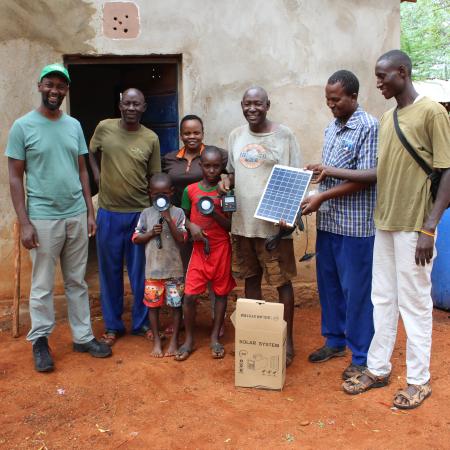
Grâce à SAPA, TT a identifié les impacts sociaux négatifs dans la zone de conservation de Kamungi. Un plan d'action commun a été élaboré pour remédier aux impacts sociaux négatifs et améliorer la situation.
Voici quelques-uns des impacts sociaux négatifs qui ont été identifiés et les interventions que TT a mises en place pour y remédier :
1. Conflit entre l'homme et la faune
- Installation d'une clôture d'exclusion des éléphants à trois brins. Cette mesure a permis de réduire de 80 % les conflits entre l'homme et l'éléphant pour plus de 7 000 personnes.
- Plan de clôture de 10 % (10 % des terres d'un ménage sont placées sous une clôture électrique anti-porcs-épics). 8 clôtures supplémentaires ont été construites et 80 personnes en ont bénéficié. Le suivi et l'évaluation ont révélé une baisse de 100 % des pertes de récoltes dues à la faune, une amélioration des perceptions et des moyens de subsistance, ainsi qu'une réduction de la pression exercée sur la zone protégée.
2. Longue distance pour aller chercher de l'eau
- Construction de 110 réservoirs d'eau. Ces bassins permettent à environ 1 100 personnes de collecter jusqu'à 6 160 000 litres d'eau de ruissellement. Des jardins potagers et des pépinières ont été créés, favorisant ainsi la sécurité alimentaire et la conservation de l'environnement.
3. Absence de bourses d'études
- Enseignement secondaire : bourses complètes pour 9 étudiants nécessiteux (6 filles et 3 garçons) dans des internats.
4. Soutien inadéquat aux écoles
- Soutien aux infrastructures : Achèvement et équipement du laboratoire scientifique de l'école secondaire de Kyusyani.
- Équipement d'un laboratoire informatique à l'école secondaire Kyusyani - énergie solaire, 20 ordinateurs portables, un projecteur et des ressources d'apprentissage en ligne. Cela devrait permettre d'améliorer les performances de l'école et d'augmenter le nombre d'inscriptions, qui est actuellement de 160 élèves.
5. Barrière de l'information entre TT et les communautés locales
Les SMS en masse ont été introduits, ce qui a permis aux communautés de recevoir des informations opportunes de la part de TT. Le nombre de membres des communautés locales participant aux activités du projet Tsavo Trust a doublé.
6. Mauvaise relation avec les TT Rangers
Les Rangers assistent aux réunions communautaires sur une base trimestrielle où ils répondent aux questions des communautés et expliquent ce que leur rôle implique.
7. 60 membres de la communauté locale ont été formés à l'agriculture intelligente face au climat. Cela leur a permis d'améliorer leur connaissance de l'agriculture en zone aride et des meilleures pratiques agricoles, renforçant ainsi la sécurité alimentaire.
8. 60 ménages ont reçu des solutions solaires domestiques. Cela contribue à réduire les émissions de combustibles fossiles et permet aux familles d'économiser environ 1 620 000 KES par an.
Les interventions ci-dessus, associées à d'autres interventions existantes, portent déjà leurs fruits. Le nombre de membres de la Kamungi Conservancy a augmenté de 80 % en 2023.
